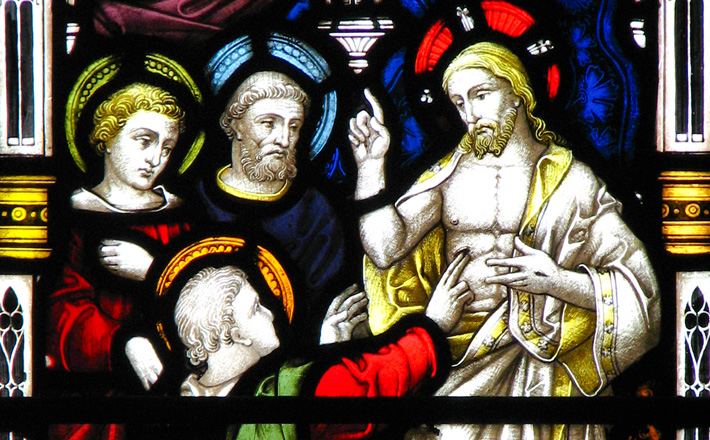Commentary on 1 Peter 1:3-9
“First Peter reflects the rapid expansion of the early church in Asia Minor.
The writer explores issues of community, mission, and suffering — issues these young faith communities may have been facing.”1
Over the next four weeks the Revised Common Lectionary gives us four readings covering most of the first two chapters of 1 Peter. Each of these successive readings from 1 Peter speaks to the shaping of identity in the fledgling Christian community; the first two readings (1:3-9 and 1:17-23) address the source of faith and hope (cf. 1:3-4; 1:21).
In the third selection (2:19-25, which is actually the fourth reading chronologically) speaks to suffering and struggle, appealing both to the example which Christ Jesus set in his own suffering, and to that which is effected by his suffering, forgiveness of and cleansing from sin. Finally in the fourth reading (2:2-10), a pastiche of biblical references is employed to define Peter’s audience, to speak them into being as God’s people.
Each of these four readings contains the fundamental language of faith, spoken by the author of 1 Peter, to establish, to shape, and to grow the early Christian community. Such language, employed for the shaping of Christian identity, is fitting not only for the fledgling life of faith, but for the ongoing, present-day life of faith, and its church.
1 Peter 1:3-9 describes the state of being defined by God’s “great mercy,” which gives us a “new birth into a living hope,” and fait that is “for salvation” (1:3, 5).
This new birth leads to two “outcomes,” in the “now” and in the “then.” Now, this new birth leads to rejoicing “with an indescribable and glorious joy.” Now, new birth is into joy. Then, “the outcome of your faith,” is “the salvation of your souls” (1:9). And it is the promise of the “then” that brings hope and joy into the “now,” most importantly and promisingly into any now that is marked and marred by suffering, by trials, and by testing.
In the midst of 1 Peter 1:3-9 we find a metaphor which captures all of this now/then tension. 1 Peter 1:7 describes a faith that is more precious than gold, but understood through the image of gold. Gold and faith; faith as gold. Faith, like gold, must be refined, tested, and purified; made “genuine” (1:7). This refining of (primarily) the people themselves is a fairly common metaphor in the Bible:
Zechariah 13:9: “And I will put this third into the fire, refine them as one refines silver, and test them as gold is tested. They will call on my name, and I will answer them. I will say, ‘They are my people’; and they will say, ‘The Lord is our God.’”
Malachi 3:2b-3: “But who can endure the day of his coming, and who can stand when he appears? For he is like a refiner’s fire and like fullers’ soap; he will sit as a refiner and purifier of silver, and he will purify the descendants of Levi and refine them like gold and silver, until they present offerings to the Lord in righteousness.”
Cf. Isaiah 48:10, where the precious metal is silver, but the metaphor essentially the same: “See, I have refined you, but not like silver; I have tested you in the furnace of adversity.”
And in Proverbs 17:3 the turn is made more explicit, where the metaphor of refining the people themselves, is taken to the heart of the people: “The crucible is for silver, and the furnace is for gold, but the Lord tests the heart.”
Here in first Peter the metaphor is of the devotion of the heart to God, both as it is refined, and in the joy it produces. This is faith. This is life in Christ. This is what 1 Peter is all about.
Notes:
1 Schultz, Raymond L., Book Introduction and Study Notes, 1 Peter, The Lutheran Study Bible (p. 1999).


April 27, 2014